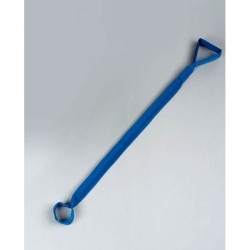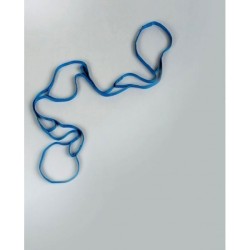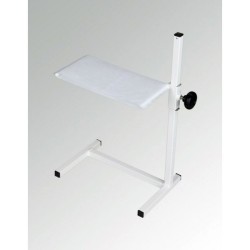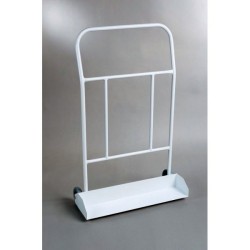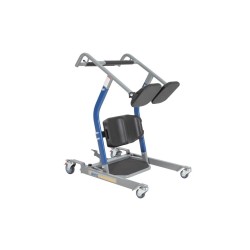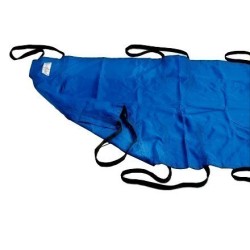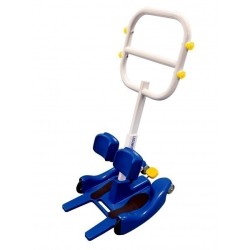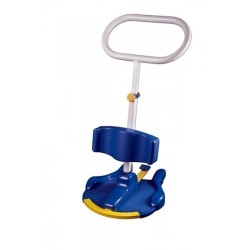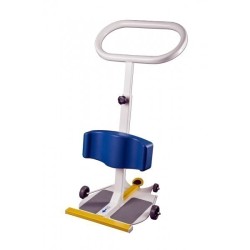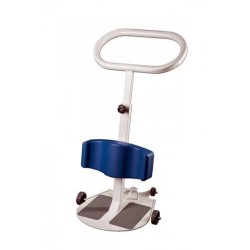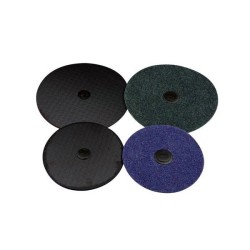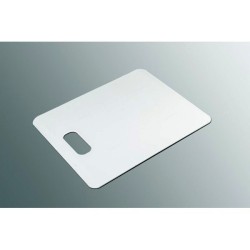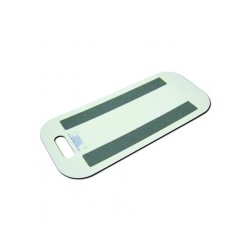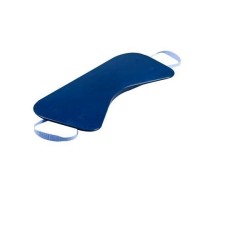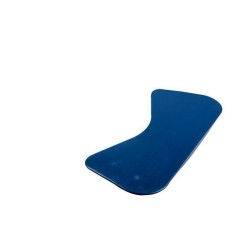Patient Transfer Aids
There are 21 products.
Active filters
About Patient Transfer Aids
Specialised Equipment for Efficient Safe Patient Transfers
Patient transfer aids provide varied equipment solutions facilitating specific transfer scenarios across hospitals, care homes, and healthcare settings throughout England, Scotland, Wales, and Northern Ireland. These specialised devices encompass transfer boards enabling sliding transfers between level surfaces, patient turntables facilitating rotation during transfers, leg lifters assisting with lower limb positioning, turning aids helping patients move in bed, and various equipment addressing specific transfer challenges. Healthcare environments utilise transfer aids for seated lateral transfers between wheelchair and car or between wheelchair and bed, rotational transfers when patients have weight-bearing ability but turning difficulty, leg positioning particularly for patients with limited hip or knee mobility, bed repositioning for pressure relief and comfort, and specific scenarios where specialised aids provide safer or more efficient solutions than general approaches. Modern transfer aids incorporate features including smooth surfaces enabling low-friction sliding, stable construction ensuring safety during use, appropriate dimensions accommodating varied users, and hygiene-conscious designs facilitating thorough cleaning. The availability of comprehensive transfer aids ensures clinical teams can address diverse transfer scenarios professionally, reduces manual handling risks through appropriate equipment, and demonstrates commitment to safe, efficient care delivery across professional care environments.
The implementation of patient transfer aids directly supports CQC compliance through enhanced transfer safety, reduced manual handling injury risks, and demonstration of appropriate equipment provision addressing varied clinical scenarios. Transfer challenges vary considerably, with some scenarios unsuitable for standard approaches such as hoisting, requiring specialised solutions. Transfer aids address specific challenges by enabling lateral transfers for patients who can slide but not stand, facilitating rotational movement when patients can weight-bear but cannot turn, assisting with limb positioning when patients lack mobility to move legs independently, and supporting bed repositioning reducing manual handling forces. Clinical applications include wheelchair-to-car transfers using transfer boards enabling independent or assisted sliding, wheelchair-to-toilet transfers for patients who can slide, bed repositioning using slide sheets and turning aids, leg positioning following hip surgery or for patients with contractures, and varied scenarios benefiting from specialised equipment. Healthcare organisations benefit from reduced staff injuries when appropriate equipment addresses specific transfer challenges, enhanced patient independence when aids enable self-transfer, improved efficiency through equipment facilitating quicker transfers, and comprehensive capability to address diverse scenarios. Modern transfer aids incorporate advanced features such as built-in handles, rotating mechanisms, and integrated positioning aids throughout England, Scotland, Wales, and Northern Ireland.
Selecting and implementing patient transfer aids requires assessment of transfer scenarios, appropriate equipment specification, and staff training across healthcare facilities throughout the UK. Organisations should evaluate typical transfer challenges identifying scenarios where specialised aids provide benefit, assess patient populations determining equipment needs, and calculate requirements ensuring availability when needed. Equipment selection should consider specific transfer scenarios with transfer boards for lateral sliding, turntables for rotational transfers, leg lifters for positioning, and turning aids for bed mobility, appropriate sizing and weight capacity, materials facilitating cleaning and infection control, and ease of use encouraging consistent application. Implementation protocols must encompass staff training on proper equipment use including patient assessment determining suitability, correct positioning and technique, and safety precautions. Quality assurance measures should include regular equipment inspection ensuring continued safety, documented maintenance or replacement schedules, cleaning protocols particularly for equipment contacting multiple patients, and monitoring of transfer aid-related incidents. Modern transfer aids incorporate features such as antimicrobial surfaces, clear usage instructions, and storage solutions. Organisations should establish protocols for equipment selection and use, integrate with manual handling policies, and maintain inventories tracking provision and condition. Individual care plans should document appropriate transfer aids, specific techniques, and any precautions. Staff education should address assessment of when specialised aids are appropriate, recognition that aids complement rather than replace assessment and technique, and limitations of different equipment types. Practice considerations should emphasise individual assessment, appropriate equipment selection, and recognition when situations require alternative approaches such as hoisting. By maintaining comprehensive patient transfer aid supplies and implementing professional selection and training protocols, healthcare organisations throughout England, Scotland, Wales, and Northern Ireland demonstrate their commitment to CQC standards, manual handling safety through appropriate equipment, efficient care delivery, and provision of specialised solutions addressing diverse transfer scenarios enabling safe, dignified, efficient transfers across all care settings requiring varied approaches to patient mobility support.


